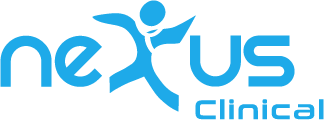
The latest survey for EHR Adoption shows that about 90% of office-based practices were using some kind of EHR by the start of this decade. This implies that most of the offices are using some level of electronic documentation methods and reducing the use of paper in their offices. However achieving 100% paperless medical practice is not easy due to the traditional mindset of users and patients where paper is more trusted and also due to the limitations of many EHR platforms in achieving such an objective.
The good news is that with technology penetration in all walks of life, more people are now comfortable with electronic information. EHR platforms are also evolving to accommodate more features that will help medical practices reduce the use of paper.
Why go Paperless?
One word answer to this question is: cost-effective
If as an ambulatory practice, you are still using paper then you need people to manage papers, and you need proper storage space to store all the papers collected at your office. Then you also need to invest in fax machines, printers, etc., and their supplies.
All these costs by themselves justify going paperless as you eliminate all these costs with an EHR that helps you to go paperless but there are even more significant costs that you save by going paperless.
One of them is accessibility and accuracy: When you need to access information stored on paper then you need to spend significant time to search required information for a particular patient and this can also result in some loss of accuracy due to human errors. If you are using EHR-based modules to generate, store, and access all information then most of the information will be already linked with Patient records or can be easily linked with Patient records in a few steps. The information access is fast and accurate.
Another more significant cost is compliance: Due to HIPAA regulations, you are required to manage patient information stored in your office with utmost care. You need to have proper document retention and disposal policies. You need to train people on how to manage documents and ensure the process is being followed diligently. By going paperless you reduce most of these hassles as EHRs help you to store documents at fault tolerant secure location away from your office and information will be encrypted for better security.
How to go paperless?
Review of available technical solutions:
You may already have an EHR solution or you may be looking for a new EHR/PM platform. The first step is to identify what you need and if those features are available in the Healthcare platform under consideration. You need to consider various areas that your practice is currently have paper-based documentation.
One of the most common and frequently used workflow where practices are still using paper documentation is intake forms, consent forms, and patient information hand-outs. You can check if your EHR/PM has the ability to use online intake forms or consent forms that help patients fill information electronically or sign documents electronically. Apart from saving paper this will also improve the accuracy of the information captured from these forms and will save significant time for your staff.
Another area is Fax management. While many office-based practices are now switching to electronic faxes which reduce the use of paper, you should check if your EHR has integrated eFax, which saves time in linking patient records with faxes and you can fax patient documents from your EHR seamlessly to external healthcare facilities.
Some other areas where paper is still in use include the printing of superbills, receipts, and statements after the patient visit. If your EHR can share receipts and statements with patients electronically on the Patient portal or on Email then that will help you to eliminate paper from these processes as well.
Finally, you need to do a quick cost-benefit analysis of going paperless in various modules, the costs may include costs of the software module/service that you are planning to use and also the costs of training your staff and workflow changes. If you do a detailed analysis and choose the platform that provides a cost-effective solution suitable for your needs then most of these costs will be insignificant compared to the benefits you will get by going paperless.
Prepare for Transition:
Prepare a plan for transition, depending on areas where you are planning to go paperless you may need to plan how when you transition each module. You will also need to talk to your EHR vendor and get their input on this plan.
Some of the areas that need your attention while making a plan are
- Transition schedule
- Training of your staff to use EHR features that will help you to go paperless – Contact your EHR vendor to schedule training or get relevant resources
- Changes in workflows due to a paperless environment. – This step will most likely optimize existing workflows of your office but they still need attention to eliminate any loopholes.
- Configurations, design changes to your EHR solution, and PM for going paperless – This includes designing forms/templates and configuring your eFax accounts or scanners to use the modules effectively. Check if you need to do these steps by yourself or if your EHR vendor helps you in any of these configurations and the creation of templates.
Go Paperless with Nexus EHR/PM:
Nexus EHR and PM platform has multiple features and modules to allow you to go paperless.
- Custom electronic document templates with auto-fill parameters: Nexus allows you to create documents online using custom forms or templates. Auto-fill parameters allow you to automatically fill in various information like patient name, provider name, practice name, date, insurance details, etc. This helps practice staff to save time in filling information on documents and increase accuracy. We also support the Topaz signature pad if you wish to capture the actual signature of the patient.
- Patient Self-service intake forms and document templates: You can use customizable intake forms for patient histories and use electronic document templates with the auto-fill feature as explained above to complete patient intake and consent forms. Patients can fill out intake and consent forms from their homes using the patient portal or they can use a self-service kiosk which you can launch from a PC or tablet available at the front desk. Self-service features also allow your staff to save time and increase the accuracy of documentation.
- Electronic Faxing: Nexus EHR has an Electronic Fax module that allows staff to send faxes directly from patient records or view and import received faxes to Patient records without using any paper. eFax module also improves efficiency by allowing you to send faxes from common workflows like referrals and consults or patient document viewer and chart note sign-off screen. You can maintain an address book to quickly search recipients for sending faxes.
- The Nexus Billing module allows you to send receipts and statements to the patient portal with email notification. Patients can pay dues online from the portal from the statement screen. This helps you to go paperless in the billing process.
- Another common requirement is patient education handouts. Nexus is integrated with the Medline database and allows providers to send education documents to the patient portal while documenting chart notes. Education documents can be accessed by patients anytime from their portal account.
Secure storage: All patient records and related documents are stored on a secure cloud with appropriate encryption while storing and accessing data.






